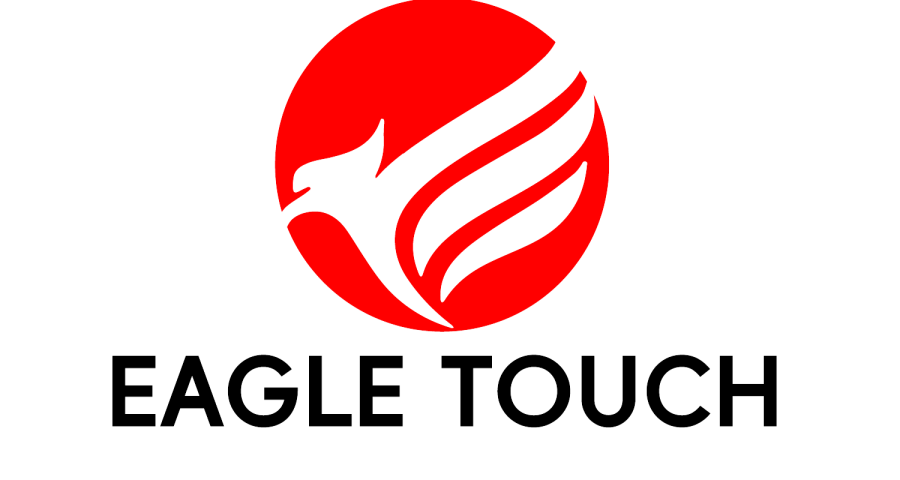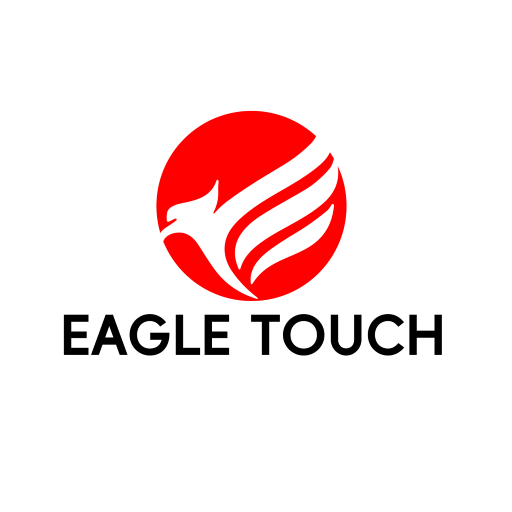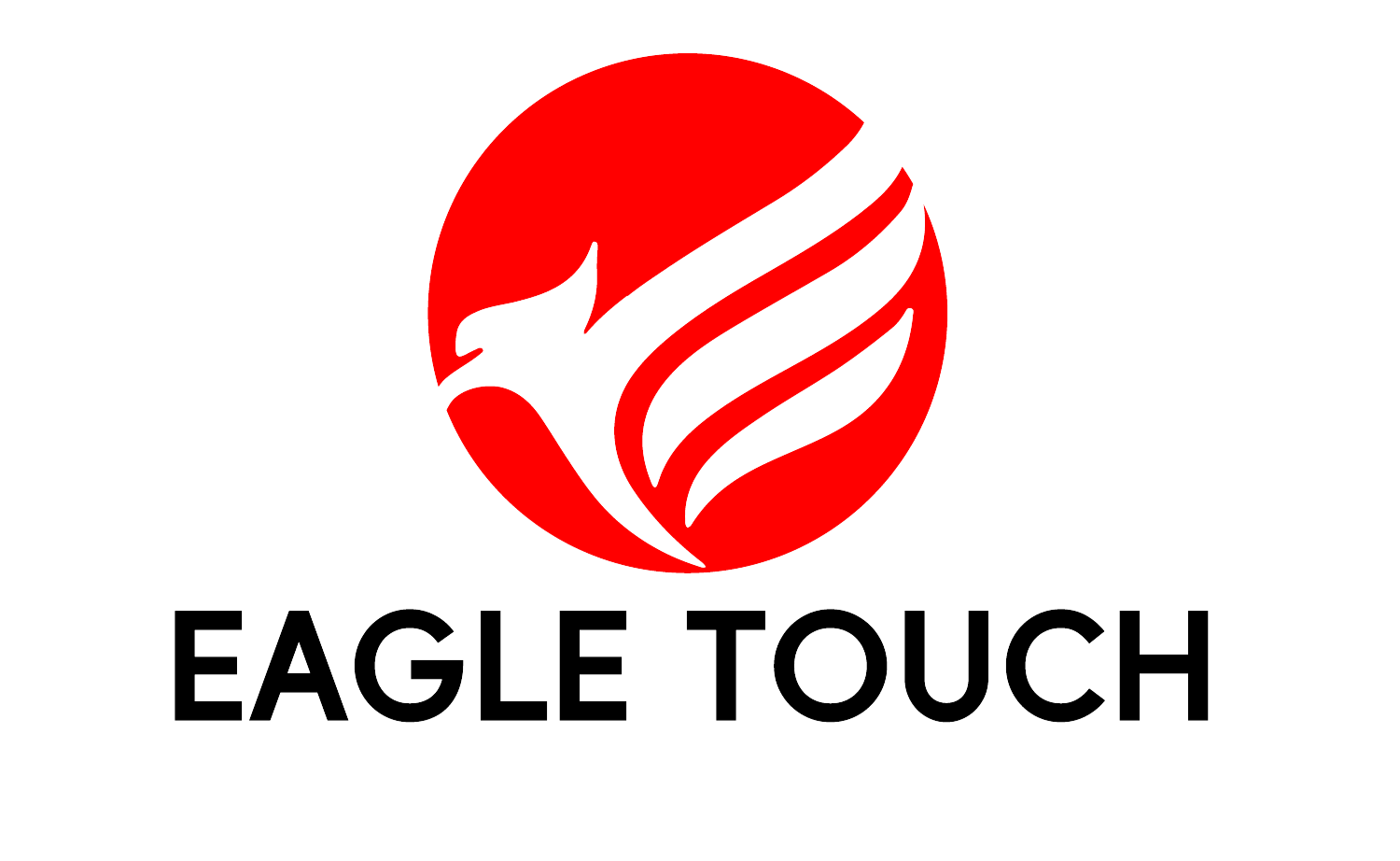Table of Contents
Introduction
Today’s business world is all about being efficient and getting things done effectively. That’s why it’s become essential to bring the latest tech into our meeting rooms. Enter the meeting room display: a game-changer in how we run our meetings. These handy devices are more than just screens on the wall; they’re the key to smoother meetings, better teamwork, and clearer communication. We’re going to dive into everything you need to know about meeting room displays—why they’re so beneficial, the different kinds you might come across, what features to look out for, and some tips on making them work for you. Stick with us as we explore how these smart tools are reshaping the way we collaborate and connect in the workplace.
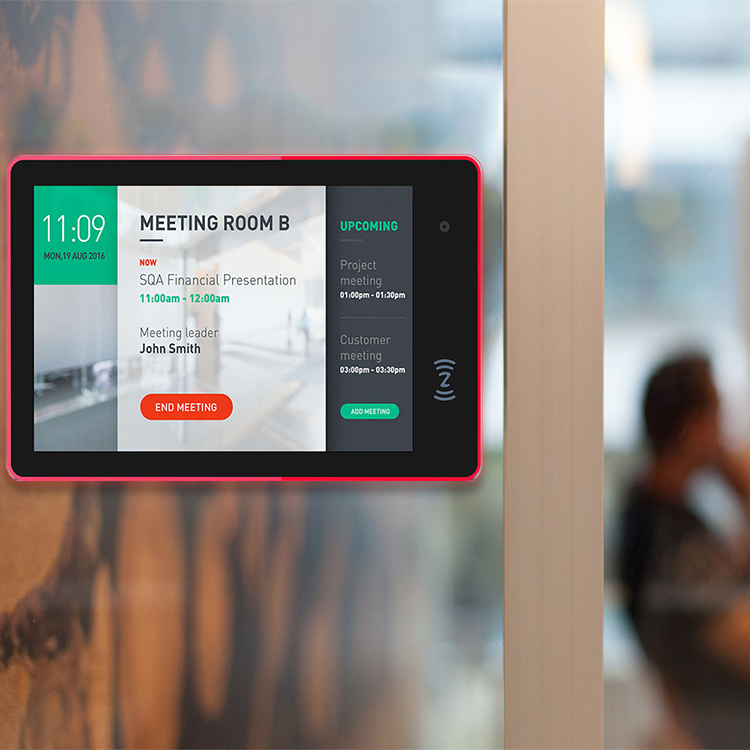
What Are Meeting Room Displays?
Imagine a digital signpost right outside your meeting rooms or conference areas—that’s a meeting room display for you. These displays keep everyone in the loop by showing who’s using the room next, when it’s free, and even let you book it right there and then. They’re like the central hub that connects with the company’s scheduling system, making sure rooms are used wisely, avoiding those awkward double bookings, and keeping team communication smooth. With a meeting room display, it’s all about making meetings run like clockwork.
Benefits of Using Meeting Room Displays
Streamlined Meeting Management
Meeting room displays take the hassle out of organizing meetings. By showing room availability in real-time, these devices allow employees to quickly find and book spaces without the need for back-and-forth emails or phone calls. This means less time spent on logistics and more time on productive work.
Clarity and Transparency
With displays clearly marking the status of meeting rooms, everyone knows at a glance which rooms are occupied, which are available, and when. This transparency helps in planning and reduces the likelihood of interruptions during meetings, fostering a more respectful and efficient work environment.
Optimal Utilization of Resources
These smart displays collect data on how meeting spaces are used, providing valuable insights into patterns and trends. This information can help businesses identify underused areas and adjust their space allocation or booking rules, ensuring that valuable meeting room real estate isn’t wasted.
Enhanced Communication
By integrating with a company’s existing scheduling systems, meeting room displays ensure that any changes to meeting times or locations are instantly updated. This keeps all team members in sync, reduces miscommunication, and ensures that meetings start on time.
Reduction in Double Bookings
Thanks to the direct link with the company’s scheduling system, meeting room displays significantly reduce the chances of two teams booking the same space at the same time. This means less frustration, fewer interruptions, and a smoother flow to the workday.
Encourages Autonomy and Responsibility
Employees can manage their own meeting bookings without relying on administrative staff. This empowerment leads to a more proactive approach to meeting management and encourages individuals to take responsibility for their schedules and the spaces they need.
Modernizes the Workplace
Adding meeting room displays is a step towards modernizing the workplace, integrating technology into everyday processes. This not only improves efficiency but can also boost company morale by showing a commitment to leveraging technology for better work experiences.
By addressing common pain points associated with meeting management, meeting room displays offer a comprehensive solution that enhances productivity, encourages better resource management, and fosters a more harmonious and connected work environment.
Types of Meeting Room Displays
When it comes to outfitting your meeting spaces with displays, there’s a variety to choose from, each with its own set of features designed to meet different needs. Here’s a closer look at the main types of meeting room displays you might consider:
Interactive Touch Screens
These are the high-tech cousins in the meeting room display family. Interactive touch screens allow users to not only see meeting schedules and room availability but also to interact directly with the display. You can book a room, extend a meeting if the room is free next, or cancel a booking, all with a few taps. They’re especially useful in dynamic office environments where schedules change frequently.
Non-interactive Displays
Simpler but no less effective, non-interactive displays provide at-a-glance information about room status (available, occupied, or booked for a specific time) and the day’s meeting schedule. While they don’t offer on-the-spot booking directly on the screen, they’re often integrated with a company’s scheduling system, allowing for remote booking and updates.
E-ink Displays
E-ink displays are valued for their low energy consumption and high visibility, even in bright conditions. They show room availability and schedules in a clear, easy-to-read format and can be updated wirelessly. Their simplicity and efficiency make them a great choice for companies focused on sustainability and ease of use.
LED Status Lights
Some meeting room displays include LED status lights—a simple, color-coded system to show room availability at a distance. Green might indicate an available room, red for occupied, and amber for a room that’s booked but not currently in use. These can be standalone systems or part of a larger display setup, adding an immediate visual cue to the current status of a room.
Integrated Room Booking Systems
These comprehensive solutions combine hardware (the physical displays) and software (the scheduling and management system) to offer a seamless room booking experience. They can include features like interactive maps of office layouts, integration with email and calendar systems, and analytics tools to track room usage and occupancy patterns.
Choosing the right type of meeting room display depends on your organization’s specific needs—whether that’s the simplicity and efficiency of e-ink displays, the interactive capabilities of touch screens, or the all-in-one convenience of integrated room booking systems. Each type offers unique benefits, from enhancing room booking efficiency to integrating with broader office management systems, contributing to a smoother, more coordinated approach to managing meeting spaces.
Key Features to Consider
When selecting meeting room displays for your office, focusing on the right features can make all the difference in how effectively they serve your needs. Here are some key features to consider that will help you choose the best solution:
Integration Capabilities
The ability to integrate seamlessly with your existing calendar and scheduling systems is crucial. Look for displays that can easily sync with platforms like Microsoft Outlook, Google Calendar, or any specialized scheduling software your organization uses. This ensures that meeting information is always up-to-date and eliminates the need for manual updates.
Visibility and Readability
Choose displays that are easily readable from a distance and in various lighting conditions. Consider factors like screen size, brightness, and contrast. Displays should clearly show the room’s availability status, upcoming meetings, and other relevant information without causing eye strain.
User Interface
An intuitive and user-friendly interface is essential, especially for interactive touch screens. Users should be able to book, extend, or cancel meetings with minimal steps. A well-designed interface reduces the learning curve and encourages adoption among employees.
Durability and Security
Meeting room displays are a significant investment, so durability is a key concern. Opt for hardware that’s built to withstand daily use. Equally important is the security of the software running on the displays, especially if they integrate with your company’s IT infrastructure. Look for systems that offer regular updates and strong data protection measures.
Connectivity Options
Consider how the displays will connect to your network. Wi-Fi connectivity offers flexibility in placement, but wired connections can be more reliable and secure. Ensure the solution you choose supports the connectivity options that best fit your IT environment.
Customization
The ability to customize the display’s appearance and functionality can help align the technology with your company’s branding and specific use cases. Options for customizing the layout, colors, and information displayed ensure the system feels like a natural extension of your workplace.
Scalability
Your chosen solution should be able to grow with your organization. Consider how easy it is to add more displays or integrate additional features as your needs evolve. Scalability ensures your investment remains valuable long-term.
Support and Maintenance
Evaluate the level of support and maintenance the vendor offers. Responsive customer service and access to technical support can prevent potential disruptions. Also, consider the ease of updating software and replacing hardware components when needed.
Best Practices for Integration
Selecting meeting room displays with these features in mind will help ensure that you invest in a solution that enhances meeting management efficiency, supports your organization’s operational needs, and offers a good return on investment over time.
Strategic Placement
Install displays in a location that’s both visible and accessible to all potential users. Ideally, this means at eye level near the entrance of each meeting room. Ensure the placement doesn’t create bottlenecks in busy areas while still being easy for anyone to see and interact with if necessary.
Consistent User Experience
The user interface on your meeting room displays should align with the tools and systems your employees are already using. Consistency in design and functionality helps reduce confusion and streamlines the learning process for new users. If your organization uses specific branding, incorporate these elements into the display design to maintain a cohesive look and feel.
Regular Updates and Maintenance
Keep the software running on your meeting room displays up to date to ensure the best performance and security. Schedule regular check-ins to review system performance, and apply updates as they become available. This includes not only the display software but also any integrations with calendar or scheduling systems.
Provide Training and Resources
Even the most intuitive system can be underutilized if users aren’t familiar with all its features. Provide training sessions, quick reference guides, or instructional videos to help employees get the most out of the meeting room displays. Make sure they know how to book a room, check availability, and cancel bookings directly from the display.
Encourage Feedback
Once your meeting room displays are in use, solicit feedback from employees about their experiences. Are there features they find particularly useful or aspects of the system that could be improved? This feedback is invaluable for making iterative improvements and ensuring the system meets the needs of its users.
Monitor Usage and Adapt
Use the analytics capabilities of your meeting room display system to monitor how meeting spaces are being utilized. Look for patterns in room usage that could indicate the need for adjustments in your booking rules or room allocations. This ongoing analysis will help you continually optimize how your meeting spaces are used.
Security and Privacy Considerations
Ensure that any sensitive information displayed is protected, especially if your displays show details about the meetings or participants. Work with your IT department to implement appropriate security measures, such as data encryption and access controls.
By following these best practices, you can ensure that your meeting room displays not only enhance the efficiency and effectiveness of meeting management in your organization but also become an integral part of your office technology ecosystem.
Conclusion
Meeting room displays have become an indispensable tool in the arsenal of modern workplace management, offering unmatched efficiency, transparency, and collaborative potential. By carefully selecting the appropriate display type and adhering to best practices for integration, organizations can significantly improve their utilization of meeting spaces and, by extension, their operational productivity.
As businesses continue to navigate the complexities of the modern workspace, the need for flexible, scalable, and user-friendly meeting room solutions becomes ever more apparent. Eagle Touch, with its commitment to delivering top-quality touch solutions, is ideally positioned to help businesses navigate these challenges. Our expertise in custom-designed touch displays ensures that your organization can enjoy a meeting room solution that not only meets your current needs but also is capable of adapting to future technological advancements.
